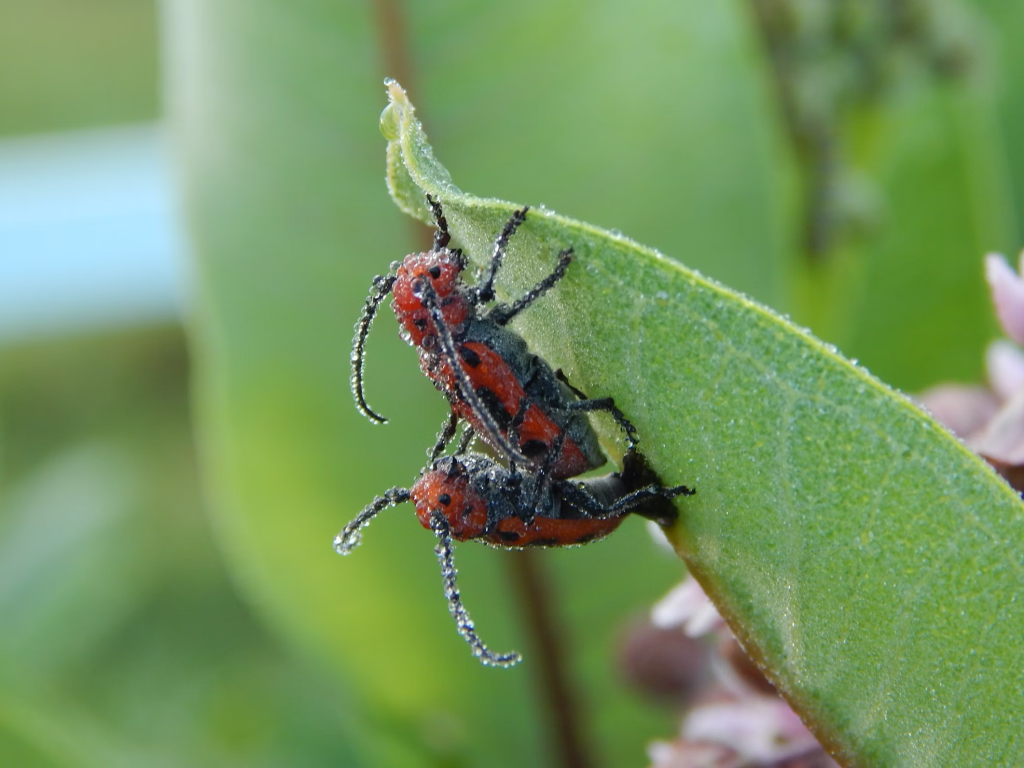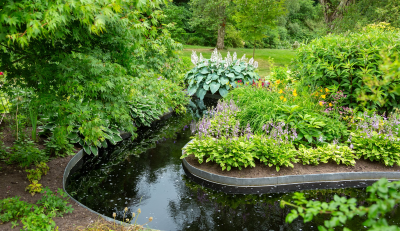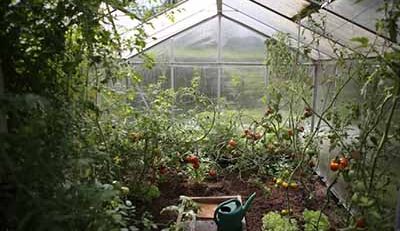Red Beetles: Identification, Prevention, and Control
Introduction
Red beetles, with their striking crimson shells, may appear harmless at first glance, but these vibrant pests can quickly become a gardener’s worst nightmare. While their bright coloration makes them easy to spot, it also serves as a warning sign of the damage they can inflict. Commonly found in gardens across temperate regions, red beetles are notorious for targeting plants like lilies, fritillaries, and other garden favorites, often leaving a trail of destruction in their wake. Their voracious appetite, combined with their ability to reproduce rapidly, means that an infestation can escalate quickly, causing severe harm to crops, ornamental plants, and even entire flower beds if not managed promptly.
What makes red beetles particularly challenging is their ability to evade predators and lay eggs that result in larvae capable of stripping plants bare. The larvae, often hidden on the undersides of leaves, cause even more damage than the adult beetles, compounding the problem. For gardeners passionate about maintaining vibrant, healthy plants, understanding how to identify and combat these pests is essential. This comprehensive guide will walk you through everything you need to know about red beetles, from recognizing their presence to taking proactive steps for prevention and control, ensuring your garden remains lush and pest-free.

What Are Red Beetles?
Red beetles, most commonly known as lily beetles (or red lily beetles), are bright red insects that often infest lilies, fritillaries, and other garden plants. Their striking red color makes them easy to spot, but their appearance belies their destructive nature. Adult beetles feed voraciously on leaves, flowers, and stems, while their larvae can strip plants bare within days.
These beetles are typically found in temperate climates and thrive in gardens with dense vegetation. Although lilies are their primary target, they may also attack other plants, making them a widespread concern for gardeners.
If you’re dealing with other common garden invaders, check out our guide on common garden pests for tips on how to manage different types of infestations.
Why Are Red Beetles a Problem?
Red beetles pose several threats to your garden:
- Damage to Plants: These beetles chew through leaves and flowers, leaving unsightly holes and damaged stems. Severe infestations can weaken plants and reduce their ability to photosynthesize.
- Rapid Reproduction: Red beetles reproduce quickly, and their larvae cause even more damage than adults. A single infestation can escalate into a full-blown crisis if not addressed promptly.
- Spread to Other Plants: Although they primarily target lilies, red beetles can also spread to other plants, creating widespread damage in your garden.
The key to managing red beetles is early detection and intervention. If you’re new to gardening or looking for tips to manage pests, our article on raised bed vegetable gardening for beginners offers insights into creating a healthy garden environment that discourages infestations.
How to Identify Red Beetles
Proper identification is the first step in controlling red beetles. Here’s what to look for:
- Appearance: Adult red beetles are about 6–8 mm long, with bright red wings and black legs and undersides. Their shiny exoskeleton makes them easy to spot on green foliage.
- Eggs: Look for small, orange or reddish eggs laid in clusters on the undersides of leaves.
- Larvae: The larvae are soft, orange or yellowish, and often covered in black fecal material, which acts as a protective shield.
- Damage Signs: Leaves with jagged edges or entirely stripped of foliage, as well as flowers with holes, are clear indicators of a red beetle infestation.
If you notice yellowing leaves or other signs of stress on your plants, refer to our guide on why is my spider plant turning brown for troubleshooting tips that may apply to your garden.
Preventing Red Beetle Infestations
Prevention is always better than cure when it comes to red beetles. Implementing these practices can help reduce the risk of infestation:
- Regular Inspections: Check your plants regularly, especially lilies and fritillaries, for signs of red beetles or their eggs.
- Companion Planting: Incorporate plants that naturally repel pests. For example, marigolds can deter various insects and improve your garden’s health overall.
- Proper Garden Maintenance: Remove plant debris, as it can serve as a breeding ground for pests. Keeping your garden tidy minimizes hiding spots for red beetles.
- Use Barriers: Place fine mesh or floating row covers over vulnerable plants to prevent adult beetles from laying eggs.
- Soil Management: Enrich your soil with organic matter like worm castings to promote strong, healthy plants. Check out our guide on how to use worm castings to boost soil fertility naturally.
How to Control Red Beetles: Natural and Chemical Methods
If you’ve identified an infestation, immediate action is crucial to minimize damage. Here are effective methods to control red beetles:
1. Handpicking
Handpicking is one of the simplest and most effective ways to manage small infestations. Inspect plants regularly and remove beetles, larvae, and eggs by hand. Drop them into a bucket of soapy water to kill them instantly. This method is labor-intensive but highly effective for early infestations.
2. Neem Oil
Neem oil is a natural insecticide that disrupts the lifecycle of red beetles. Spray neem oil on the leaves, focusing on the undersides where eggs and larvae are often found. Reapply every 7–10 days for best results.
3. Diatomaceous Earth
Sprinkle food-grade diatomaceous earth around the base of plants. This natural powder damages the exoskeletons of insects, causing dehydration and death. It’s safe for plants and pets but should be reapplied after rain.
4. Chemical Pesticides
For severe infestations, chemical pesticides may be necessary. Look for products labeled specifically for red beetles or general garden pests. Always follow the manufacturer’s instructions and apply pesticides sparingly to avoid harming beneficial insects.
For additional pest control methods, see our guide on how to hand pollinate cucumbers, which includes tips for managing pest-related pollination issues.
Dealing with Red Beetle Damage
IIf red beetles have already taken a toll on your plants, it’s important to act quickly to minimize further harm and support your plants’ recovery. While red beetle damage can be unsightly and discouraging, the good news is that most plants, when given proper care, have the ability to bounce back. Here are several steps you can take to help your garden recover:
Prune Damaged Leaves: Start by inspecting your plants thoroughly to assess the extent of the damage. Use clean, sharp pruning shears to remove heavily damaged leaves, stems, and flowers. Focus on cutting back any areas that are too chewed or diseased to recover. This not only helps the plant redirect energy to healthy growth but also improves air circulation, reducing the risk of secondary infections. Dispose of pruned material immediately to prevent pests from lingering or spreading to other plants. For severe infestations, you may need to remove entire sections of the plant to give it the best chance of recovery.
Fertilize Appropriately: After pruning, it’s crucial to provide your plants with the nutrients they need to regenerate. A balanced fertilizer will encourage healthy new growth, while organic options like compost or worm castings are excellent for replenishing the soil and improving its overall quality. Apply fertilizers carefully, following the manufacturer’s instructions to avoid over-fertilization, which can stress already weakened plants. For long-term recovery, enriching the soil with organic matter will create a healthier growing environment that supports resilient plants.
Water Consistently: Stress from pest damage can leave plants vulnerable to dehydration. Ensure that your plants receive adequate water, especially during hot or dry conditions. Water deeply at the base of the plant to avoid wetting the foliage, which can lead to fungal problems. However, be careful not to overwater, as waterlogged soil can cause root rot.
Monitor for Reinfestation: Even after you’ve taken steps to remove red beetles and treat the damage, these pests can return. Continue to check your plants regularly for new signs of beetles, eggs, or larvae. Look closely at the undersides of leaves, where red beetles often lay their eggs. If you spot any, remove them promptly and take additional pest control measures as needed. Handpicking adult beetles and using natural deterrents like neem oil can help keep future infestations at bay.
Mulch and Protect the Soil: Adding a layer of organic mulch around your plants can help retain moisture, regulate soil temperature, and suppress weeds. Mulching also protects exposed roots from further stress and encourages healthier regrowth.
Provide Shade for Stressed Plants: If the damaged plants are located in a particularly sunny spot, consider providing temporary shade to reduce additional stress. Use garden fabric or a lightweight cloth to shield plants during the hottest parts of the day, allowing them to recover without the strain of intense sunlight.
Encourage Natural Predators: Introducing or encouraging beneficial insects like ladybugs or lacewings in your garden can help control any remaining red beetles and prevent future outbreaks. These natural predators feed on pests, creating a balanced ecosystem that reduces the need for chemical interventions.
Support Long-Term Recovery: Plants that have suffered significant damage may take some time to regain their full vigor. Be patient and continue to provide consistent care, including regular watering, feeding, and monitoring for pests. Over time, the combination of pruning, fertilization, and pest control will help restore your garden to its former glory.
For plants showing extreme signs of stress, such as yellowing leaves or stunted growth, additional care may be necessary. . By staying vigilant and proactive, you can help your plants overcome red beetle damage and thrive once again.
Long-Term Strategies for Red Beetle Management
To ensure your garden remains beetle-free in the long term, consider these strategies:
- Encourage Natural Predators: Birds and beneficial insects like ladybugs and lacewings can help control red beetle populations. Planting flowers that attract these predators can create a balanced ecosystem.
- Rotate Crops: Avoid planting lilies in the same spot every year, as this can discourage beetles from returning.
- Educate Yourself: Stay informed about the lifecycle and habits of red beetles. Early intervention is key to managing these pests effectively.
Conclusion
Red beetles may be small, but their impact on your garden can be significant if not managed properly. By learning how to identify, prevent, and control infestations, you can protect your plants and ensure a thriving, beautiful garden. Regular inspections, natural deterrents, and prompt action are your best tools for keeping red beetles at bay.
Whether you’re dealing with red beetles or other pests, cultivating a healthy garden environment is essential for long-term success. Consider integrating companion plants, organic practices, and beneficial insects to create a resilient and vibrant outdoor space. With the right strategies and a little effort, you can enjoy a pest-free garden and the satisfaction of knowing your plants are thriving under your care.













Leave a Reply